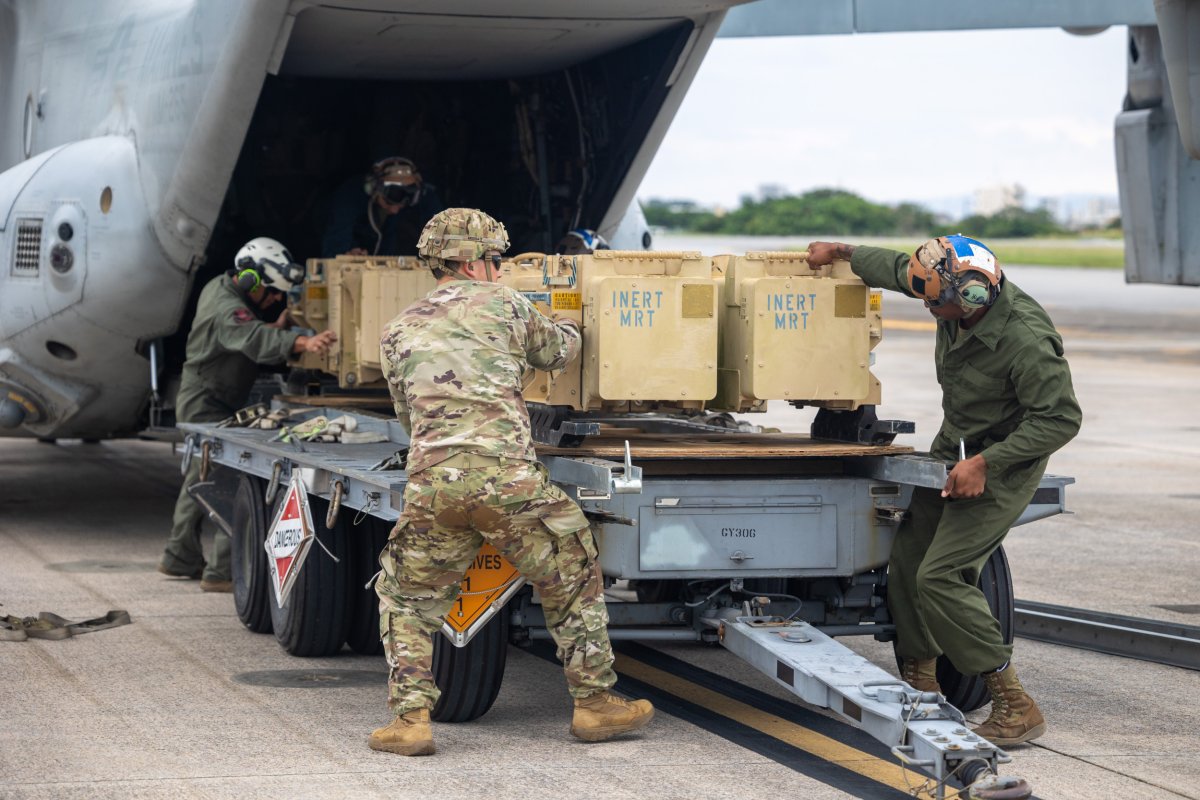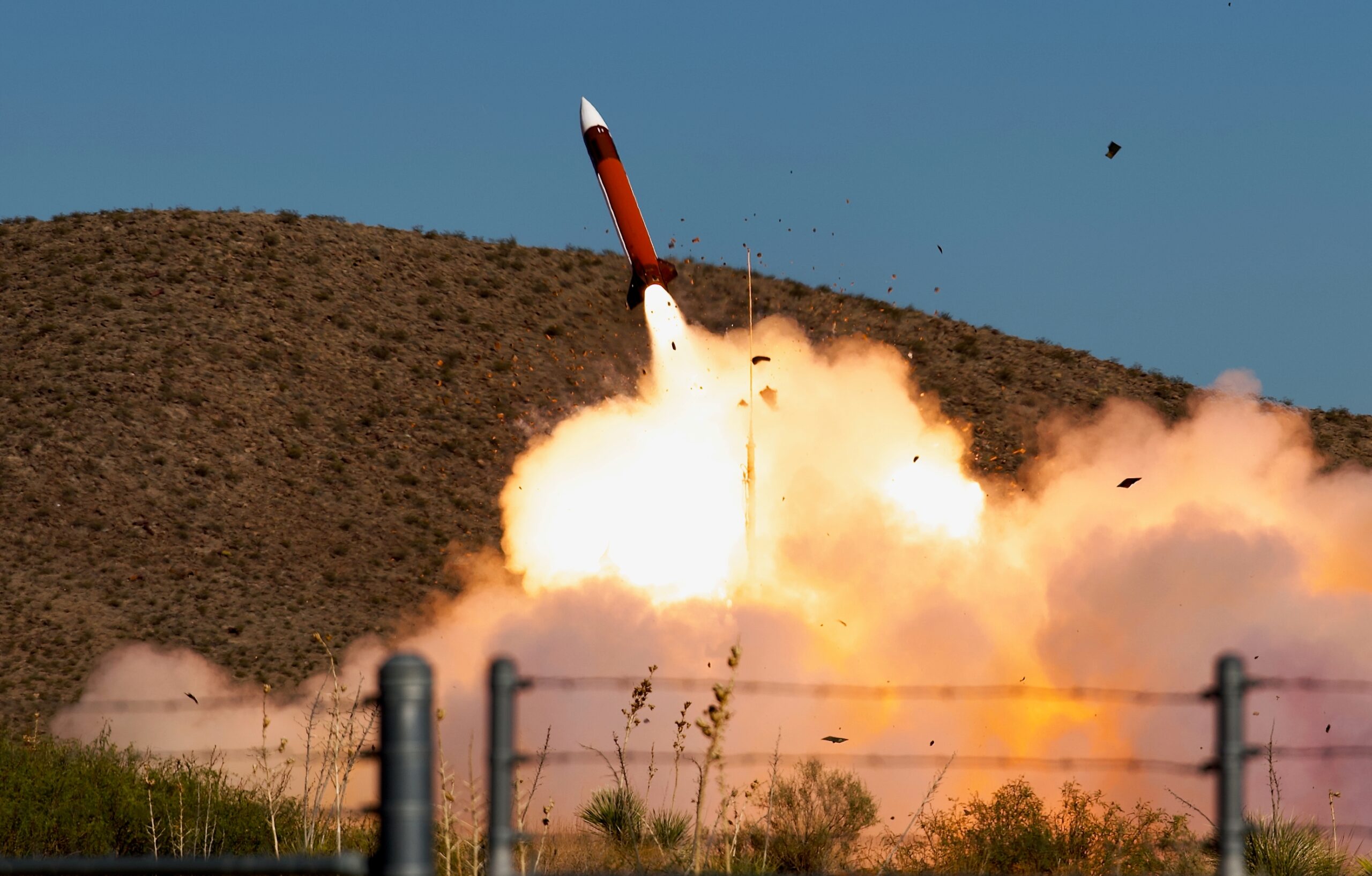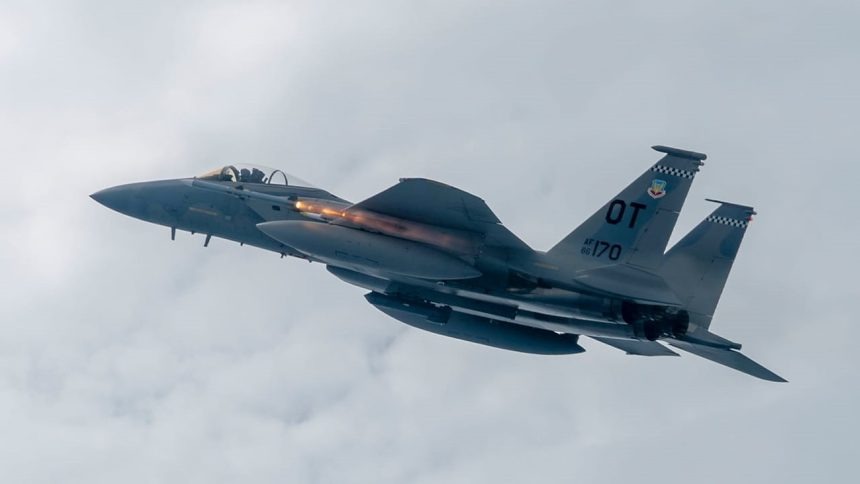American and Japanese air defense units conducted live fire trainings with their Patriot missiles as Chinese and Russian military aircraft continued to fly near Japan’s airspace.
Operation Shining Star is an annual training exercise where air defense experts from the United States and Japan execute simultaneous live fires of the Patriot air defense missile system. It is capable of detecting, identifying, and defeating different aerial threats, including manned and unmanned aircraft, cruise missiles, and tactical ballistic missiles.
Capt. Frank Spatt/U.S. Army
The joint trainings were held in McGregor Range and White Sands Missile Range in the U.S. state of New Mexico. China and Russia keep sending their military aircraft, such as bombers, fighter jets, spy planes, and drones, around the Japanese islands.
According to the defense ministry in Tokyo, Japanese fighter jets were scrambled 54 times in October to intercept foreign military aircraft suspected of possible airspace violations. The scrambles included 22 times against Russian aircraft and 32 against Chinese planes.
Participating units of the Shining Star, which ran from September 4 to December 5, were the 1st Battalion, 1st Air Defense Artillery Regiment of the U.S. Army 38th Air Defense Artillery Brigade, and four air defense missile groups of the Japan Air Self-Defense Force.
The American air defense battalion is based at Kadena Air Base on the Japanese island of Okinawa, which is part of the country’s Southwest Islands that lie between the East China Sea and the Philippine Sea. Both of them are marginal seas of the Western Pacific Ocean.
✨SHINING STAR 25🌟Soldiers from 1st Battalion, 1st Air Defense Artillery Regiment, 38th Air Defense Artillery Brigade, 94th Army Air and Missile Defense…
Okinawa forms part of the first island chain, a defense concept proposed by the U.S. that extends southward from Japan to Taiwan and the Philippines. It aims to leverage allied or friendly territories to contain the Chinese military in the wider Western Pacific Ocean.
On October 20, a H-6 bomber and a Y-9 spy plane left mainland China and flew over the Miyako Strait, a waterway lying between Japan’s islands of Miyako and Okinawa. Eight days later, a group of three Chinese military aircraft, including a drone, transited the strait.
In the sky over the Sea of Japan, which separates Japan, Russia’s Far East, and the Korean Peninsula, two Russian Tu-95MS bombers conducted a 10-hour flight with Su-30SM fighter jets on October 22. This type of bomber can carry six to 14 nuclear cruise missiles.
The Shining Star enhanced “joint and bilateral air defense capabilities” with the Japanese units, including mutual understanding of each other’s tactics, and validated the Patriot air defense missile system, the 38th Air Defense Artillery Brigade said on November 9.
Meanwhile, the same U.S. Army air defense battalion conducted a loading and unloading training exercise of the Patriot missiles with the U.S. Marine Corps at Marine Corps Air Station Futenma on November 5, another major U.S. military facility on Okinawa Island.

U.S. Marine Corps/Sgt. Gabriel Antwiler
During the bilateral exercise, the Patriot missile interceptors were loaded and unloaded onto an MV-22B Osprey. This is a tilt-rotor military transport and cargo aircraft that is capable of flying as a fixed-wing aircraft while conducting takeoffs and landings as a helicopter.
According to the 38th Air Defense Artillery Brigade, the testing of a prototype loading system has been completed, which can deliver the Patriot missiles to remote locations, enabling rapid reload in contingency operations and ensuring a free and open Indo-Pacific.


